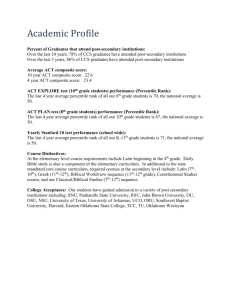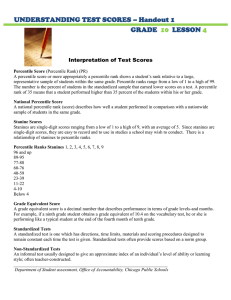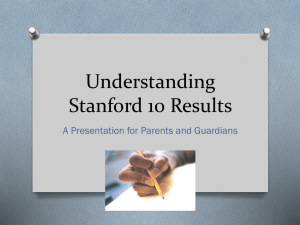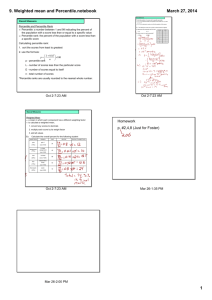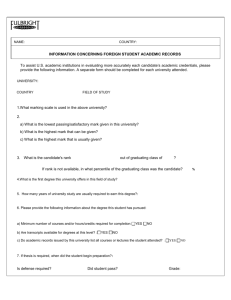EDU 330: Educational Psychology Final Exam Overview When you
advertisement
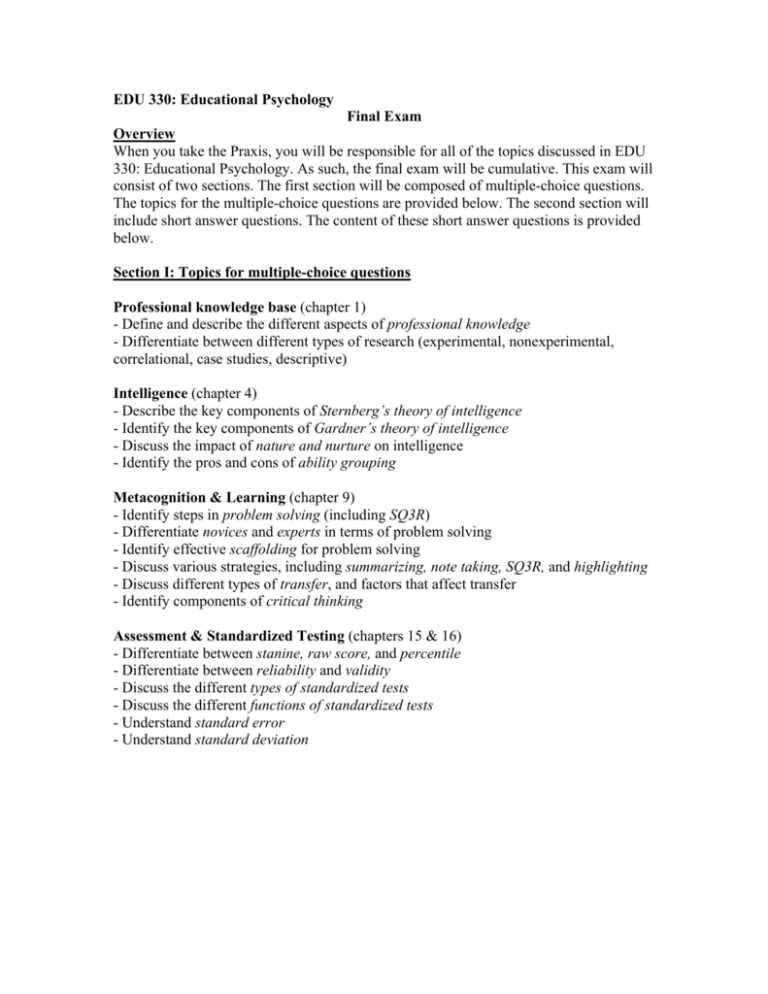
EDU 330: Educational Psychology Final Exam Overview When you take the Praxis, you will be responsible for all of the topics discussed in EDU 330: Educational Psychology. As such, the final exam will be cumulative. This exam will consist of two sections. The first section will be composed of multiple-choice questions. The topics for the multiple-choice questions are provided below. The second section will include short answer questions. The content of these short answer questions is provided below. Section I: Topics for multiple-choice questions Professional knowledge base (chapter 1) - Define and describe the different aspects of professional knowledge - Differentiate between different types of research (experimental, nonexperimental, correlational, case studies, descriptive) Intelligence (chapter 4) - Describe the key components of Sternberg’s theory of intelligence - Identify the key components of Gardner’s theory of intelligence - Discuss the impact of nature and nurture on intelligence - Identify the pros and cons of ability grouping Metacognition & Learning (chapter 9) - Identify steps in problem solving (including SQ3R) - Differentiate novices and experts in terms of problem solving - Identify effective scaffolding for problem solving - Discuss various strategies, including summarizing, note taking, SQ3R, and highlighting - Discuss different types of transfer, and factors that affect transfer - Identify components of critical thinking Assessment & Standardized Testing (chapters 15 & 16) - Differentiate between stanine, raw score, and percentile - Differentiate between reliability and validity - Discuss the different types of standardized tests - Discuss the different functions of standardized tests - Understand standard error - Understand standard deviation Section II: Short answer questions. The below questions are the short answer questions that you will be asked to answer on the final exam. While you cannot bring in the answers to the final exam, you are expected to critically think about these questions prior to the final exam. Piaget & Vyogotksy (chapter 2) 1. Identify one important implication from Piaget’s theory of cognitive development and one important implication from Vygotsky’s socioculural theory for teaching in your content area and developmental group. Culture & Gender (chapter 4) 2. Mrs. Kinder attended a workshop designed to improve her effectiveness in working with cultural minorities. She attempted to implement the information in her class the following day. She began a reading group by having the students read a story and then discussing it. She started by reminding the students to remember who the story was about and what the people were doing. After the students were finished reading the story, she began discussing it by asking questions, such as, “Now tell me some things about the story,” and “Describe the story for us,” distributing the questions equally among the students in the class. She also asked questions, such as, “What was the boy’s name in the story?” directing these questions equally to both minority and non-minority students and giving them plenty of time to answer. Finally, as the time approached to finish the activity, she said, “Now, everyone, close your reading books, and take all your materials back to your desks.” Based on the information in the case study, identify three things Mrs. Kinder did that were effective for working with cultural minorities. Behaviorism & Social Cog theory (chapter 6) 3. A school is putting an exemption policy in place. The policy is: If you have an A average and have missed no more than 4 days of school during the semester, you don’t have to take the semester exam; if a you have a B average and have missed no more than 3 days, you don’t have to take the semester exam, and if you have a C average and have missed no more than 2 days, you don’t have to take the semester exam. The exemption policy is designed to encourage kids to come to school. What concept from behaviorism is the school attempting to apply in implementing this exemption policy? Explain. Do you agree with this policy? Why or why not? IPT & Constructivism (chapter 7 & 8) 4. Jennifer Clower wants her students to understand that when we exert a force on an object, it accelerates. She explains acceleration, such as objects speeding up as they fall to the earth, but she is uneasy about the extent to which the students understand the concept acceleration. So, she demonstrates force and acceleration by pulling a small cart across the front of the classroom using a spring scale that exerts a constant force. She also holds a tennis ball above her head and drops it and then shows a computer simulation that illustrates the acceleration of the dropped ball in slow motion. Jennifer explains that as the distances between the images of the ball get greater and greater, the ball is accelerating. Assess Jennifer’s lesson using the principles that guide teachers as they plan and conduct lessons based on constructivist views of learning. Standardized Testing and Assessment (chapters 15 & 16) 5. The following standardized test scores are for Beth and Anne, two fifth grade students: In math, Anne has a percentile rank of 45, a stanine of 7 in science, a grade equivalent score of 8.5 in reading and a percentile rank of 68. On problem solving, she had a raw score of 72. In social studies, she received a percentile score of 78. Beth has a raw score of 81 in math, a percentile rank of 54 in science. In reading, she has a grade equivalent for 2.8 and a percentile rank of 31. On problem solving, she had a percentile rank 38. In social studies her stanine score was 3. You are preparing for teacher conferences with Anne and Beth's parents. For each child, first explain each individual subject area score. Second provide an overall assessment of the student.

